How To Use Your Buyer Persona + Buyer's Journey For Targeted Marketing
Successful marketing is all about the three A’s: attention, anticipation, and aim. How can you make sure that your attention-catching creatives are displayed to the right customers at the right time?
That’s the game. If you can get that fantastic event promo video in front of consumers that are interested in attending the events you host right when they’re in the purchasing mindset, you convert.
But how do you know who to target (i.e., aim)?
How do you know when to target them (i.e., anticipation)?
And how do you make sure that they notice you (i.e., attention)?
The answer is in your buyer persona and buyer’s journey workflow.
And, when you blend them both together, you can create amazing customer persona workflows that leverage consumer buying stages to generate rapid conversions, increased ticket sales for your event and tons of juicy leads.
Here’s how you do it.
1. What is a Buyer Persona?
Your buyer persona is a semi-fictional mockup of your perfect customer based on existing data and educated speculation.
Not only do buyer personas help you create successful campaigns, but they help humanize your customers — helping you build rich campaigns that are meaningful and people-oriented.
Really, your buyer persona helps you in all aspects of your event, but we’ll focus on marketing.
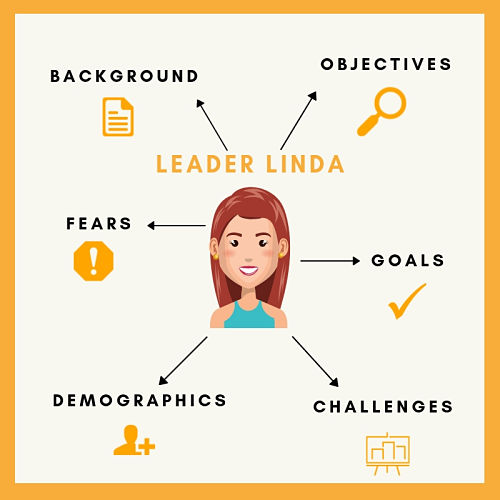
As event marketers, you’re used to focusing on the data. But do you understand the people?
Over 60% of marketers admit that they don’t really understand their customers and not knowing who those customers are is a BIG deal.
78% of customers flat out refuse to engage with brands who don’t personalize content to meet their needs; 87 % say that personally relevant data influences how they feel and engage with brands, and 63% of customers get annoyed if you feed them non-personalized boring, old ads.
Buyer personas help you humanize your customers and market to them as people — not data.
There’s a reason that 56% of companies generate higher quality leads with personas; they work! In fact, over 90% of successful sales teams use personas.
Hence... the successful part.
Before we continue, do you want to know how to create a buyer persona? Check out our blog post about it. You’ll need this moving into the next part.
2. What is the Buyer’s Journey?
The buyer’s journey is all the steps that people in your buyer persona(s) take before they’re ready to purchase your product.
When you first learn about something new, you probably don’t just run out and buy it.
First, you research it, read some reviews, watch some videos, engage with the website, etc. until you’re finally ready to buy. All of those steps you just took are “the buyer’s journey.”
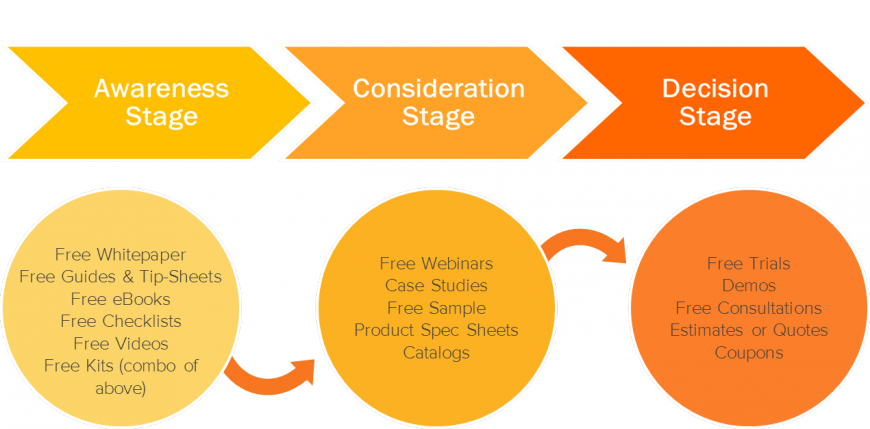
Typically, the buyer’s journey is represented in three stages.
-
Awareness: I have a problem I need to solve.
-
Consideration: What should I use to solve my problem? I need to do some research!
-
Decision: Here are 10 things that are great at solving this problem; now it’s time to choose one of them.
We won’t go too far into the types of buyer’s journeys out there. If this is your first time experimenting with a buyer’s journey, stick to the three steps.
You can expand it out further into loyalty stages and repurchase stages once you nail the first stages.
Before we continue, do you want to know how to leverage the buyer’s journey? Check out our blog post about it. You’ll also need this moving into the final part.
3 Ways to Use Your Buyer Persona in the Buyer’s Journey
Do you have the buyer persona next to you? Great! Let’s talk about how you can shove that persona into the buyer’s journey to create intelligent event marketing campaigns that work.
Remember, your buyer persona is a semi-fictional representation of your perfect customers based on all of that rich marketing data (and a few key guesses) that you have.
And your buyer’s journey is all the steps that that perfect customer is going to take along the way before they purchase a ticket to your event.
Here are three ways you can use that persona to empower your journey.
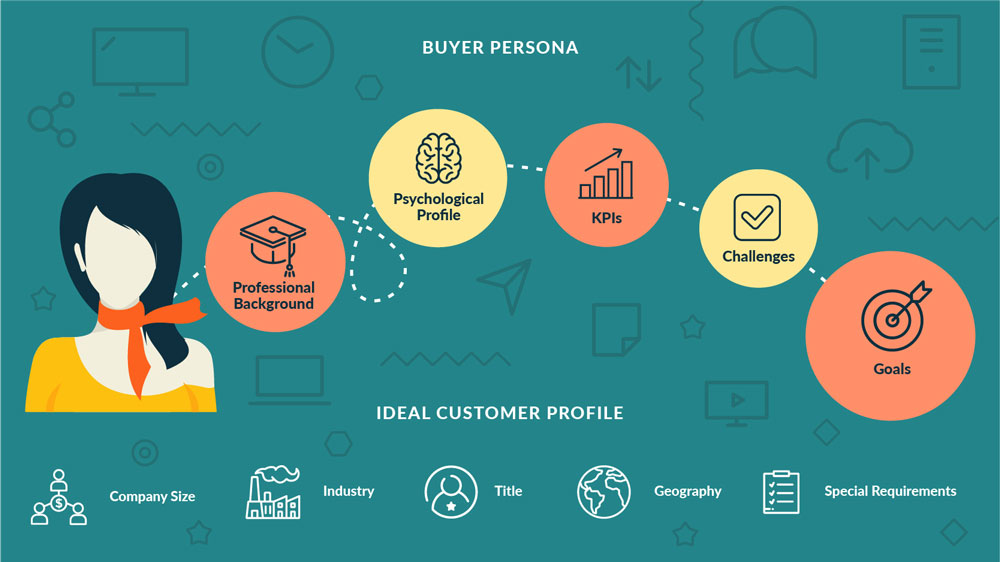
1. Take time to understand the Person
The buyer’s journey is hinged to emotions.
When people are in the awareness stage, they have a real issue. For event marketers, this issue is something like “I want to see insert keynote speaker talk” or “I want to go to a concert with insert musician“ or “I want to attend a conference on insert topic.”
You know what they want (i.e., your event), but without your persona, you don’t know who they are.
What would make them want to click on your landing page?
What creatives would they watch?
Leverage your persona to create amazing content the resonates with your crowd.
In other words, you need to personalize your content to BOTH the buyer persona (i.e., what creatives would they like?) and the buyer’s journey (i.e., what kind of content would help them make the decision they’re stuck on?).
2. Do a Content Audit
Did you make some great content based on those personas? Sweet! Time to figure out where to put it. Every piece of content you have needs to be mapped to a stage in the buyer’s journey.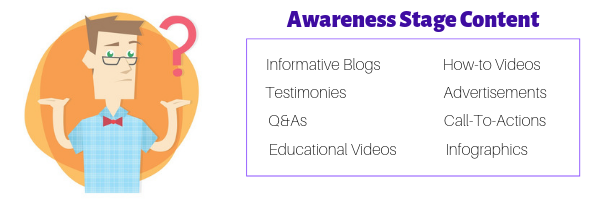
-
Blogs, how-to videos, and infographics fit into the awareness stage. They want to figure something out and that’s the content you can use to help them.
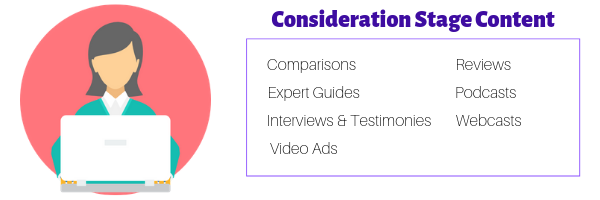
-
All of your reviews, Q&As, podcasts, and deeper marketing content fits into the consideration stage. It’s what they need to know about your event compared to all the other events out there.
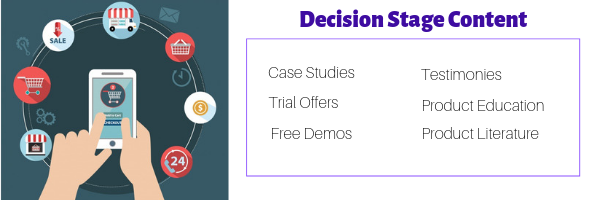
- Finally, case studies, live streams, and all of your other content fits into the decision stage. They’re almost ready to buy; they just want to take it for a spin.
3. Create Intelligent Triggers
If personas are all about aim (i.e., who are you marketing to?) and journeys are about attention (i.e., how do you catch their attention?), triggers are anticipations (i.e., how do you send marketing materials to them at the right time?)
To set up triggers, you use software that automates marketing campaigns (e.g., emails, SMS, etc.) when someone takes a specific action.
The idea is to provide marketing materials that engage your personas and leverage the buyer’s journey automatically at the exact second that they’re most meaningful.
There are tons of triggers you can use. From welcome emails when they first sign up to free demo invites when they download a white paper, making sure that you give them the next logical step in the buyer’s journey sequence is crucial.
This is basically a marketing hack. You’re anticipating their every move and giving them content that’s not only meaningful to them, but content that answers the next question on their mind.
Once they follow that yellow brick road of triggers, they will arrive at one place — your event.










